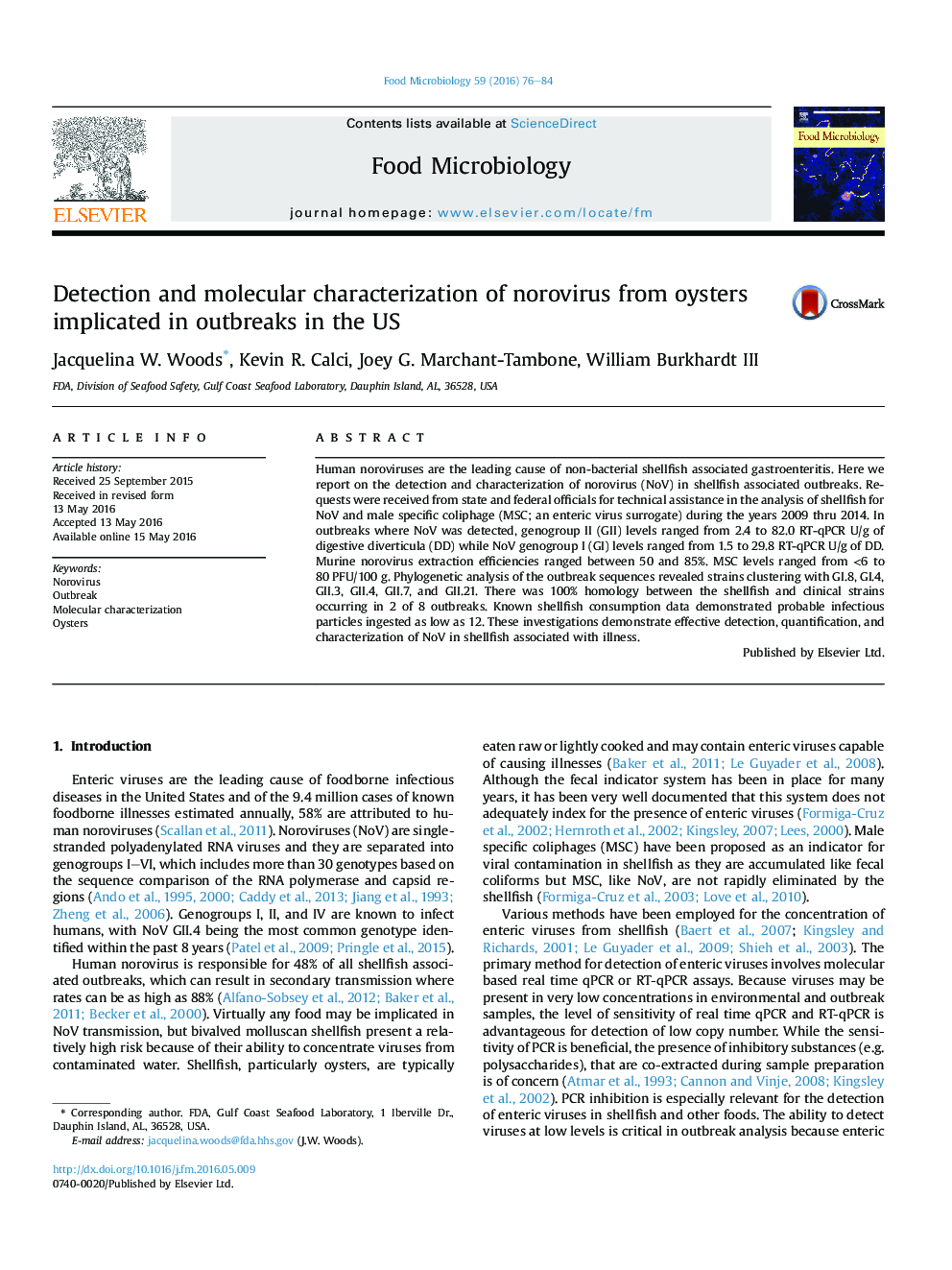| Article ID | Journal | Published Year | Pages | File Type |
|---|---|---|---|---|
| 6288381 | Food Microbiology | 2016 | 9 Pages |
â¢Multiple genotypes detected in outbreak samples.â¢Characterization of norovirus in shellfish from outbreak samples was not dependent upon Ct values.â¢Calculation of probable infectious particles ingested of NoV from implicated oysters.
Human noroviruses are the leading cause of non-bacterial shellfish associated gastroenteritis. Here we report on the detection and characterization of norovirus (NoV) in shellfish associated outbreaks. Requests were received from state and federal officials for technical assistance in the analysis of shellfish for NoV and male specific coliphage (MSC; an enteric virus surrogate) during the years 2009 thru 2014. In outbreaks where NoV was detected, genogroup II (GII) levels ranged from 2.4 to 82.0 RT-qPCR U/g of digestive diverticula (DD) while NoV genogroup I (GI) levels ranged from 1.5 to 29.8 RT-qPCR U/g of DD. Murine norovirus extraction efficiencies ranged between 50 and 85%. MSC levels ranged from <6 to 80Â PFU/100Â g. Phylogenetic analysis of the outbreak sequences revealed strains clustering with GI.8, GI.4, GII.3, GII.4, GII.7, and GII.21. There was 100% homology between the shellfish and clinical strains occurring in 2 of 8 outbreaks. Known shellfish consumption data demonstrated probable infectious particles ingested as low as 12. These investigations demonstrate effective detection, quantification, and characterization of NoV in shellfish associated with illness.
